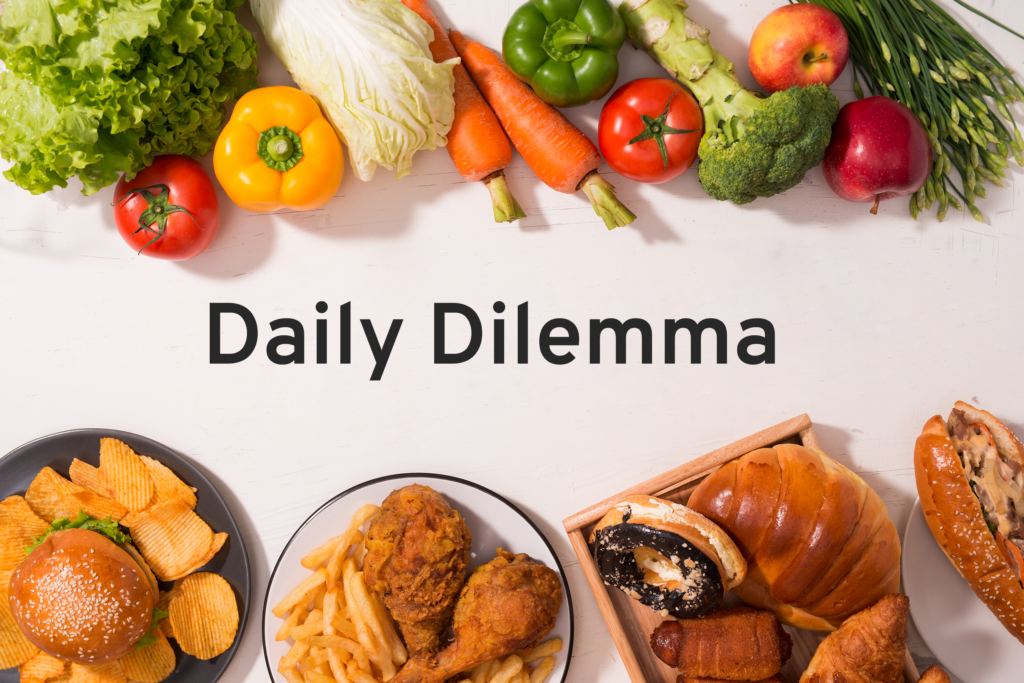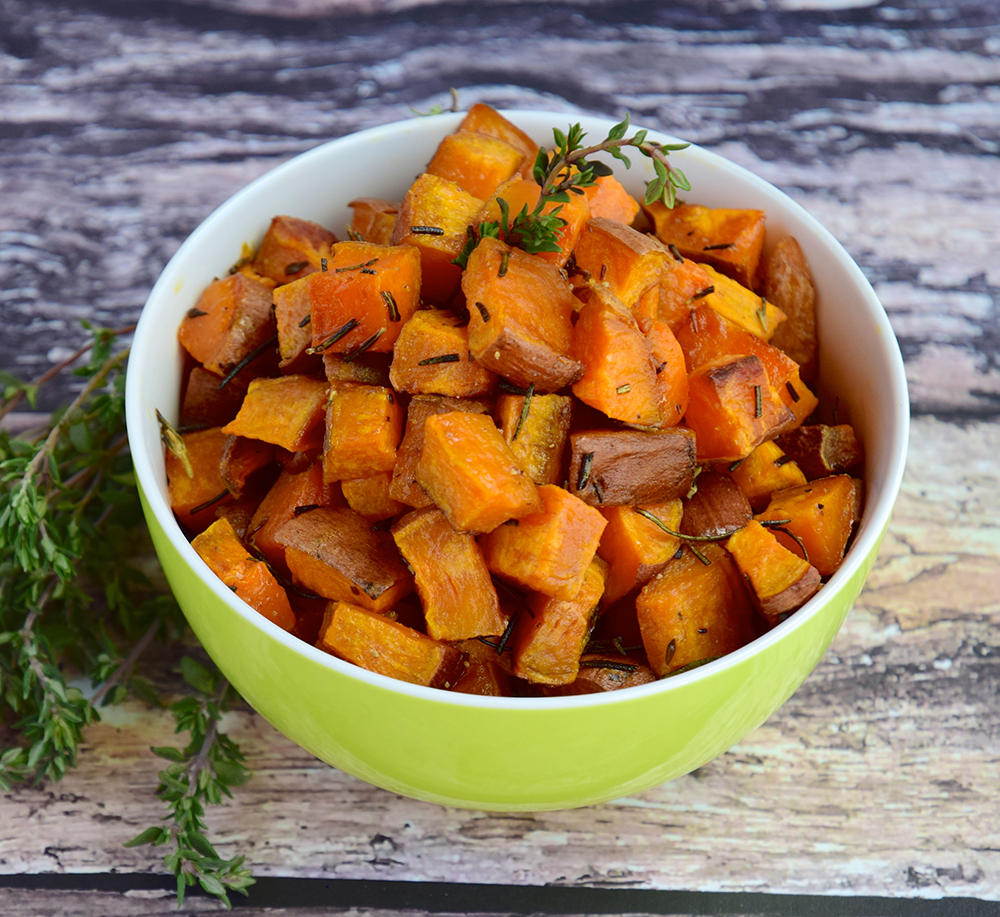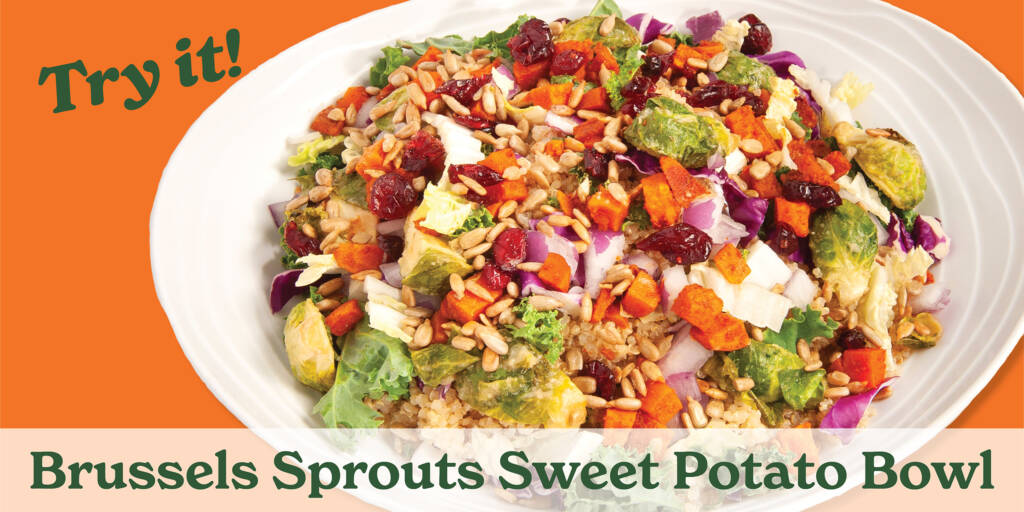Five Tips to Help Train Your Taste Buds to Crave Healthy Foods
by Alexandra Liles, CHOP5 Wellness Blogger
Making sense of the cacophonous mess of nutrition advice that we are inundated by on a daily basis can be a daunting task. At any given moment when I login to social media I could see an influencer touting the benefits of some sort of juice cleanse, immediately followed by someone else swearing off fruit in all forms and preaching the benefits of the latest fad diet. Who do we believe? Why has it become so difficult to answer the simple question, ‘what’s for dinner?’ and why do we constantly crave foods we know are bad for us?

It is a misconception that food preferences and cravings are genetic. In fact, evidence suggests that our experience with foods can override our innate dispositions. By understanding how our own taste buds work and how our food preferences are influenced, we can train our palates to crave foods that nourish our bodies with some simple strategies. Try these five tips to start rewiring your taste buds to crave a healthier diet:
1. Pass on the ultra-processed foods:

Most of us inherently know that we could benefit from avoiding processed, packaged foods. But what most of us fail to grasp is just how dependent on these foods we truly are. Ultra-processed foods are the main source (nearly 58%) of calories eaten by Americans, and contribute almost 90% of the energy we get from added sugars.
Nearly all the food we eat is processed in some way and not all processed foods are bad per se. Apple sauce, for example, is just processed apples and should not be considered junk food. However, ultra-processed foods (fast foods, frozen packaged foods, any sort of junk foods) are uniquely calorically dense and contain a multitude of added sugar, salt, fat, and a slew of additives, preservatives, and stabilizers.
Following our apple example, the ultra-processed version would be an apple pie from a fast food drive through or the bakery section of your local grocery store. In short, ultra-processed foods are less real food and more food-like products. Studies have shown that those who consume the highest amounts of ultra-processed foods have higher risks of cardiovascular disease, coronary heart disease, and cerebrovascular disease. Not to mention, and perhaps more importantly, numbed out taste buds.
Opting for the whole-food or minimally processed variation of your food of choice will give your taste buds a reprieve from the onslaught of those high levels of salt, sugar, and fat we receive when we indulge in the ultra-processed versions. A good rule of thumb when shopping or choosing foods is to read the ingredients label: if there are more than five ingredients and/or if any of those ingredients are not something you might find in your kitchen, or your mom’s kitchen, leave it on the shelf– it’s ultra-processed. Try skipping these ultra-processed items altogether for one week and see how much your taste buds change. You might be surprised at how sweet a bite of carrots taste after a week off sugar-laden, ultra-processed meals.
2. Fill up on fresh, in-season, whole-foods:
Before processed and ultra-processed foods existed, the only food we ate was food that was in season where we lived. Choosing fresh, local, seasonal produce tastes better and ensures our bodies are properly nourished throughout the year with the appropriate vitamins, minerals, and phytonutrients. These nutrients are crucial for maintaining a balanced diet and overall well-being.
Focusing on fresh, seasonal foods will also naturally lead you towards eating a variety of produce that you would not typically choose. More and more evidence has emerged that shows the more variety of plants we eat, the healthier we are overall. Give your taste buds a second chance– if you’ve tried sweet potatoes and didn’t like them in the past, maybe they’ll grow on you the second or third try.

3. Skip the added sugars:

Similar to the benefits we see when we ditch ultra-processed foods, skipping the extra serving of sugar will help us reset and recalibrate our tastes for certain foods. One study showed that just two sugary sodas per day can dull our taste buds and lead to exponentially increased cravings for calorie-dense, sugary foods. Instead of soda, try carbonated water with no sugars or sweeteners added. Instead of adding sugar-sweetened creamer to your coffee, try blending it with frozen bananas to make a whole-food sweetened shake.
The good news is this recalibration can be effective quickly– avoid added sugars and artificial sweeteners for just one week and see how your tastes for whole-foods change. Turns out you might actually like kale! My husband discovered his love of kale only after he gave up his daily soda habit.
4. Substitute table salt with flavorful herbs and spices:
According to the European Heart Journal, people who always add salt to their food after cooking are 28% more likely to be at risk of an early death. Salt is important in cooking to bring out the natural flavors of the item being cooked; however it is not the only thing that can get the job done. Try experimenting with different spices and explore how they bring out different components of your dish. Sprinkle a pinch or two of cumin over steamed or roasted carrots, for example. Or see how onion and garlic powder sprinkled over roasted broccoli florets brings out the sweetness of the vegetable.
Combined with our other tips, incorporating more variety of spices into your meals will help you fall in love with the flavors of whole-foods, while also providing even more phytonutrients and antioxidants to your diet.
5. Slow down and savor your meals:
Perhaps the biggest hurdle when it comes to sticking with a healthy, balanced, whole-foods focused meal plan is the issue of time. It is not always convenient to take time to put meals together, especially during a busy work week. Be patient with yourself and persistent about scheduling time to slow down to savor your food.
Most of us eat too fast and as a result we consume more calories than we actually need, or want for that matter, before our bodies have time to realize we are full. Tuning in to our sensory experience during a meal will increase our overall dining pleasure and satisfaction while also allowing us appropriate time to digest and notice when we are feeling full.
Luckily for those of us living within driving distance or delivery proximity to a CHOP5, we can get a quick fix on those busy days where all our best meal prep and planning gets pushed aside. CHOP5 ingredients are always fresh, flavorful whole-foods and their salad dressings are all made in house with little to no added sugar. Knowing which healthy options to choose in a pinch will give us more time to relax and enjoy the food.

